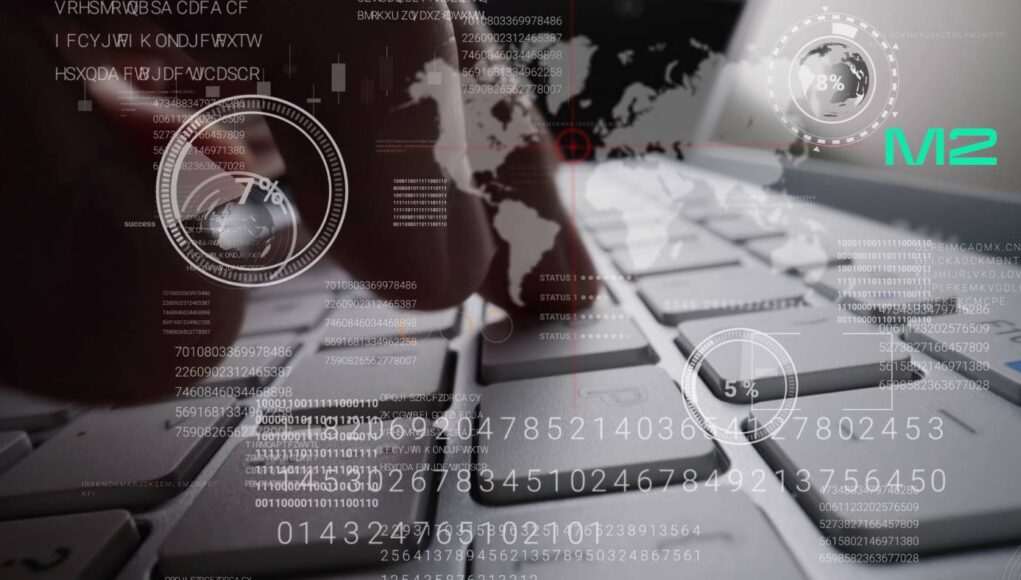In a striking Halloween breach, the UAE-based M2 crypto exchange faced a significant security incident, resulting in $13.7 million in stolen digital assets, including major cryptocurrencies like Bitcoin, Ethereum, and Solana. In an impressive display of crisis management, M2 acted swiftly, restoring full funds to affected users within hours. This hack of the M2 exchange underscores the ongoing security challenges in the crypto industry, particularly in balancing accessibility with protection. As M2 commits to strengthened security protocols, this event highlights the critical need for vigilance against cyber threats in a space where digital assets are prime targets.
On October 31, 2024, the M2 exchange hack shocked the cryptocurrency community when hackers breached the UAE-based platform, making off with $13.7 million in digital assets. This high-profile incident exploited vulnerabilities within M2’s hot wallet infrastructure, a security risk that has impacted other exchanges in the past. Hot wallets, which remain connected to the internet for ease of transaction access, are inherently more susceptible to such attacks. Despite the significant loss, M2’s rapid response, and assurance of fund recovery have earned commendation, turning the M2 hack into a case study in effective crisis management within the volatile world of cryptocurrency.
The breach affected multiple cryptocurrencies, including popular assets like Bitcoin (BTC), Ethereum (ETH), and Solana (SOL). Although the hack involved a substantial amount, M2 resolved the situation within just 16 minutes, a remarkable turnaround highlighting its commitment to user protection. The exchange reassured customers that it had restored all impacted funds and pledged to strengthen its security measures further to prevent a repeat.
Hot Wallet Vulnerabilities and the M2 Exchange Hack
The M2 exchange hack brings attention to the risks associated with hot wallets – digital wallets connected to the internet and commonly used by exchanges for faster transactions. Hot wallet vulnerabilities are a recurring issue within the crypto industry, where hackers exploit this type of infrastructure to drain assets. These types of attacks raise essential questions about how exchanges can secure assets without sacrificing accessibility. Blockchain investigator ZachXBT, known for tracing crypto thefts, identified specific wallet addresses tied to the M2 exchange hack, underscoring the role of blockchain transparency in tracking illicit activities.
Lessons in Crisis Management from the M2 Exchange Hack
The M2 exchange hack has positioned M2 as a case study in swift and effective crisis management within the crypto industry. By immediately restoring user funds, M2 has demonstrated a level of responsibility that is critical for maintaining user trust. The exchange’s response to the breach – combining both a rapid recovery plan and new preventive measures – reflects a growing trend among exchanges to prioritize customer protection amid cyber threats. The M2 exchange hack thus becomes more than just an incident; it serves as a blueprint for other exchanges on how to handle such crises with accountability and transparency.
Broader Industry Implications of the M2 Exchange Hack
As the M2 hack adds to the list of recent crypto security incidents, it underscores the need for robust cybersecurity measures, particularly as the UAE continues to develop as a major crypto hub. Incidents like this could potentially accelerate regulatory conversations in the region, with calls for stronger security standards to protect users and sustain industry growth. As M2 and other exchanges adapt to increasingly sophisticated threats, the current incident serves as a stark reminder that digital asset protection requires constant vigilance and adaptation.
>>> Read more: BingX Hack Sparks Hot vs. Cold Wallet Debate in Crypto Security
In conclusion, the M2 exchange hack illustrates both the vulnerabilities inherent to cryptocurrency exchanges and the critical importance of a user-centric approach in times of crisis. The swift recovery and full fund restoration by M2 have set a positive example in the crypto space, but the breach of the M2 exchange also highlights the ongoing need for robust security protocols to protect against similar threats. This incident reinforces the industry’s dedication to enhancing digital asset security while meeting the demands of a growing global user base.
Readers’ frequently asked questions
What measures are common after a crypto exchange hack like this one?
Typically, after a security breach, crypto exchanges often move to implement multi-layered security protocols, particularly focusing on asset storage. One common measure is increasing reliance on cold storage, where assets are kept offline and are less vulnerable to hacks. Another strategy is integrating 24/7 monitoring software that flags any unusual transaction patterns, allowing for rapid responses similar to M2’s 16-minute reaction time. Additionally, exchanges sometimes partner with cybersecurity firms specializing in blockchain to fortify their defenses and continuously audit security practices. This approach helps detect vulnerabilities early and ensures compliance with evolving security standards.
Are there best practices users should follow to enhance their own security on exchanges?
Users can take several steps to bolster their security when trading on exchanges. Two-factor authentication (2FA) is essential, adding a layer of security by requiring a second form of verification. Keeping assets in personal wallets, such as a cold wallet or hardware wallet, rather than leaving them on an exchange can also reduce exposure to potential exchange hacks. Users should also be vigilant against phishing attacks, especially following incidents like the M2 hack, as scammers may attempt to exploit heightened awareness. Staying informed on the security practices of any exchange is beneficial, as transparency often correlates with better security standards.
How do blockchain analytics help in tracking stolen funds, and can they recover them?
Blockchain analytics play a key role in tracking stolen funds, as each transaction on the blockchain is recorded and viewable by anyone. Investigators can trace funds through the blockchain by following wallet addresses, which often helps in identifying patterns or connections to known hacker addresses. However, while tracking is effective for visibility, recovering funds is complex, as it requires collaboration with law enforcement and sometimes with centralized exchanges where stolen funds may be converted. Many exchanges now use analytics services to prevent hacked funds from being laundered, marking certain wallet addresses to limit the circulation of stolen assets.
What Is In It For You? Action Items You Might Want to Consider
Consider moving long-term holdings to a secure cold wallet
If you’re holding a significant amount of cryptocurrency on exchanges, think about transferring these assets to a cold wallet. Cold wallets, stored offline, significantly reduce the risk of cyber attacks compared to hot wallets on exchanges. This can offer peace of mind for long-term assets you don’t need to access regularly.
Enable two-factor authentication (2FA) on all exchange accounts
Adding 2FA to your exchange accounts provides an extra layer of security that’s especially valuable in light of incidents like the M2 hack. Choose app-based 2FA, such as Google Authenticator, over SMS-based methods for a stronger defense. Taking this step can help safeguard your assets from unauthorized access, even if exchange security is compromised.
Stay informed about your exchange’s security practices and updates
Keep an eye on any security announcements or updates from the exchanges you use, especially if they’re implementing changes following a security breach. Knowing what safeguards your exchange has in place and how they respond to incidents can give you better control over your risk exposure.











Cryptocurrency has turned global business into a high-stakes poker game, where traditional currencies are the old-school players nervously watching the flashy new crypto gamblers toss chips around. While it promises “decentralized freedom,” many businesses are left wondering if they’ve entered a revolution or just a glorified casino. The volatility keeps CFOs up at night, while blockchain enthusiasts call it “innovation.” Perhaps the real currency here is confusion, traded at an all-time high!❤️